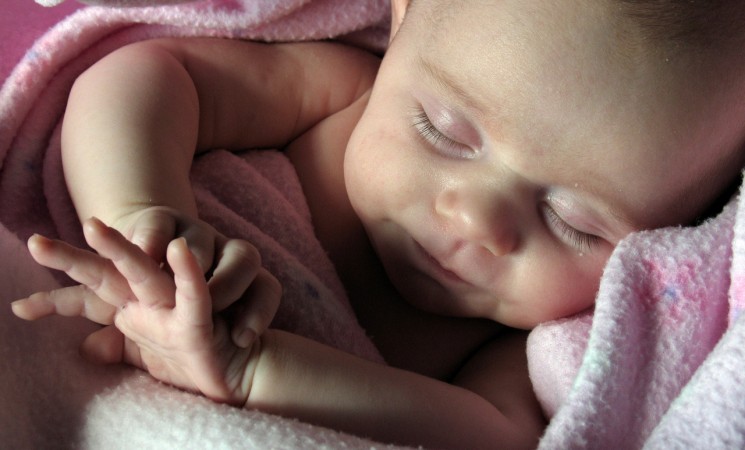Archived Content
This page is archived and provided for historical reference. The content is no longer being updated, and some of the information may have changed over time and could be outdated or inaccurate.

By Jennifer B. Kane, Ph.D.
Social inequalities in infant health are a highly prioritized population health issue in our country. Rates of adverse birth outcomes, such as low birthweight (<2,500 g), are consistently higher among poor and unmarried women, as well as non-Hispanic Black and some Hispanic women. Because poor infant health outcomes can have also severe, long-lasting implications for children’s health and wellbeing, infant health is one mechanism through which inequalities can be transmitted from parents to children. This is the key to understanding why this is such a highly prioritized issue: Improving infant health could have dramatic implications not only for the health and well-being of future generations but also for population-level patterns of social inequality.
Improving infant health could improve health of future generations and population-level patterns of social inequality
Unfortunately, researchers do not yet fully understand what causes adverse birth outcomes, and therefore, have yet to identify proven ways to prevent these outcomes or reduce stark social disparities in infant health. This may partly (though certainly not fully) stem from a general lack of cross-fertilization of knowledge on this topic across disciplines.
Public health scholars often focus on intragenerational pathways, examining how women’s exposure to risk factors during pregnancy contribute to adverse birth outcomes. (Recent efforts have also examined preconception risk factors that predate pregnancy, although much less is known here.) On the other hand, economists, sociologists, and geneticists tend to approach this topic from a different angle, by linking birthweight across parents and children. This intergenerational approach has demonstrated striking and persistent similarities in low birthweight among mother–daughter pairs and has shown that fetal and maternal genetic factors explain a portion (less than half) of the intergenerational similarity.
Researchers haven’t identified proven ways to prevent adverse birth outcomes or reduce social disparities in infant health
In a recent study published in the Journal of Health and Social Behavior, I draw upon theory and empirical findings from these disparate literatures to introduce and develop a new conceptual model integrating intra- and intergenerational preconception processes that likely contribute to poor infant health. Then, I empirically test the new model utilizing a structural equation model that simultaneously estimates the numerous pathways proposed, and drawing upon data containing linked mother–daughter pairs from the National Longitudinal Survey of Youth (NLSY79) and the Children of the NLSY79.
Study results contribute two key insights on this topic.
- First, mother-daughter transmissions of nonmarital childbearing and low levels of education (potentially reflecting underlying mechanisms related to parent-child socialization, role modeling, or family instability) appear to have a long-term influence on birth outcomes of future generations. This was supported by two findings: (1) Low levels of preconception maternal education was transmitted across (at least) three generations and was ultimately a risk factor for growth restriction; and (2) Nonmarital childbearing was transmitted across (at least) two generations and was a risk factor for growth restriction. Intergenerational transmissions of education and nonmarital childbearing are well documented in sociology and demography; that low levels of maternal education (at birth) and nonmarital childbearing are associated with adverse birth outcomes is well known in public health. By integrating these approaches however, this study reveals longer-term preconception pathways dating back at least three generations that influence the birthweight of future generations.
- Second, the long-term influence of (intragenerational) social disadvantage on birth outcomes appear to extend beyond that of one generation, to impact the birth outcomes of future generations as well. This was evidenced by a pathway linking low maternal education to nonmarital childbearing. This, in turn, was a risk factor for growth restriction and low birthweight. The final leg of the pathway indicated an intergenerational transmission of growth restriction (and of low birthweight), which was detected above and beyond unobserved genetic and/or social factors shared between mothers’ and daughters’ birth outcomes. This entire pathway then bridges findings from behavior genetics, economics, sociology, and the social inequalities in health literature to offer a new, longer-term perspective of preconception risk factors and pathways influencing infant health.
Mother–daughter transmissions of nonmarital childbearing, low education have long-term influence on future birth outcomes
These findings suggest several implications for future research and policy, which are fully described in the paper.
Perhaps the most important implication, however, is that these results unambiguously point to the importance of shifting our attention away from a singular focus on risk and protective factors contained within the prenatal period alone—or even within the 12 months prior to conception—and towards a broader framework that includes not only women’s early life course experiences but also longer-term intergenerational effects. Such a venture is necessarily cross-disciplinary.
If adopted, this shift could stimulate new research identifying a wide range of preconception risk factors of adverse birth outcomes, potentially moving the field closer to understanding the root causes of poor infant health, and, ultimately, how to prevent it.
Funding Acknowledgement
This study was supported by the Eunice Kennedy Shriver National Institute of Child Health and Human Development (NICHD) (K99 HD075860; PI: JB Kane) and benefited from NICHD support awarded to The University of North Carolina’s Carolina Population Center (grants T32 HD007168 and R24 HD050924).
Read the Article
About the Author
 Dr. Kane is assistant professor in the Department of Sociology at the University California, Irvine (UCI). Her primary research interests are social inequality, its emergence over the life course, and the role of family and the early life environment in shaping social and health disparities. Her past research demonstrates how family instability and childhood poverty can influence adult health and well-being, above and beyond underlying selection mechanisms that confound these associations. She has also identified pathways through which poor infant health and poor cardiovascular health are dynamically shaped across the early life course by individual’s interactions with social environments and institutions. Her work, currently funded by an NICHD K99/R00 award, contributes to broader literatures on health inequality, social mobility, and social stratification. She has published in journals such as Demography, Journal of Marriage & Family, Population Research and Policy Review, Journal of Health and Social Behavior, and Social Science & Medicine. Read Dr. Kane's faculty profile here.
Dr. Kane is assistant professor in the Department of Sociology at the University California, Irvine (UCI). Her primary research interests are social inequality, its emergence over the life course, and the role of family and the early life environment in shaping social and health disparities. Her past research demonstrates how family instability and childhood poverty can influence adult health and well-being, above and beyond underlying selection mechanisms that confound these associations. She has also identified pathways through which poor infant health and poor cardiovascular health are dynamically shaped across the early life course by individual’s interactions with social environments and institutions. Her work, currently funded by an NICHD K99/R00 award, contributes to broader literatures on health inequality, social mobility, and social stratification. She has published in journals such as Demography, Journal of Marriage & Family, Population Research and Policy Review, Journal of Health and Social Behavior, and Social Science & Medicine. Read Dr. Kane's faculty profile here.
Freeimages.com/SS








